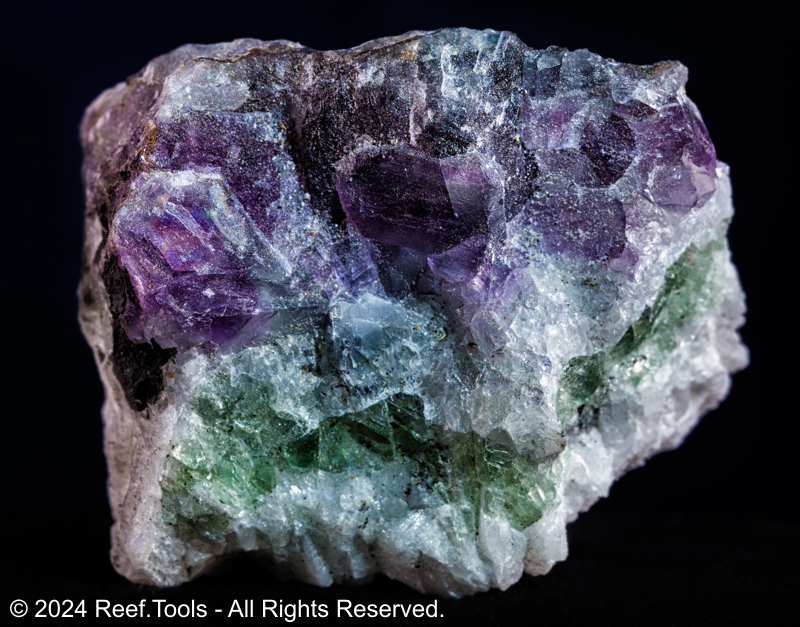
Fluorine (F)
Halogens
Atomic Number: 9
Last Reviewed: 12/15/2024
Fluorine (F), existing predominantly as fluoride ions (F⁻) in marine environments, is a trace element present in natural seawater. Its role in reef aquariums is a subject of ongoing research, with considerations for both its biological significance and the challenges associated with its management.
Natural Seawater Levels
Concentration: Fluoride concentrations in natural seawater are approximately 1.3 mg/L.
Risks
Deficiency: There is no documented evidence of fluoride deficiency adversely affecting marine organisms in reef aquariums.
Excess: Elevated fluoride levels can lead to skeletal damage in corals and harm beneficial bacterial films. Concentrations above 1.4 mg/L are considered excessive.
Relevancy
Biological Processes: Fluoride may play roles in various biological processes, including skeletal formation and protection against parasites. However, definitive evidence supporting these functions in marine organisms is limited.
Coral Coloration: Some aquarists suggest that fluoride supplementation can enhance coral coloration, particularly blues and whites. This claim lacks substantial scientific validation.
Ocean Values
| Reference Name | Low | High | Optimal | Unit |
|---|---|---|---|---|
| Hawaii Ocean | 1.0000 | 1.5000 | 1.3000 | mg/L |
| Florida Ocean | 1.0000 | 1.5000 | 1.3000 | mg/L |
| Australia Ocean | 1.2000 | 1.4000 | 1.3000 | mg/L |
Regional Variations
Fluoride concentrations in seawater are relatively consistent globally, with minor variations due to local environmental factors.
Dosage Recommendations
Target Level: Maintain fluoride concentrations at approximately 1.3 mg/L, consistent with natural seawater levels.
Supplementation: If necessary, follow manufacturer guidelines and adjust based on accurate testing to avoid overdosage.
Handling
Testing: Utilize precise analytical methods for fluoride measurement, acknowledging the limitations of standard aquarium test kits.
Supplementation: Only consider supplementation if a verified deficiency exists, and proceed with caution to prevent toxicity.
Reef.Tools recommends: Maintain Fluorine (F) concentrations between 1.0000 and 1.5000 mg/L.
References
- World Health Organization. "Fluoride in Drinking-water." World Health Organization
- Warner, T.B. "Fluoride Analysis in Sea Water and in Other Complex Natural Waters Using an Ion-Selective Electrode." SpringerLink
- Reef Pedia. "Fluorine in a Saltwater Aquarium and its Importance." Reefpedia
Difficulty
Rating: Moderate
Accurate testing is complex, and the narrow margin between natural and excessive levels requires careful management.
Categorization
Element Type: Trace Element
Role: Potential involvement in skeletal formation and parasite defense (unconfirmed)
Not Usually Deficient
Regular water changes and quality salt mixes typically maintain adequate fluoride levels.
Not Essential
The specific biological necessity of fluoride in marine organisms remains under investigation.
Aliases
Fluoride (F⁻)